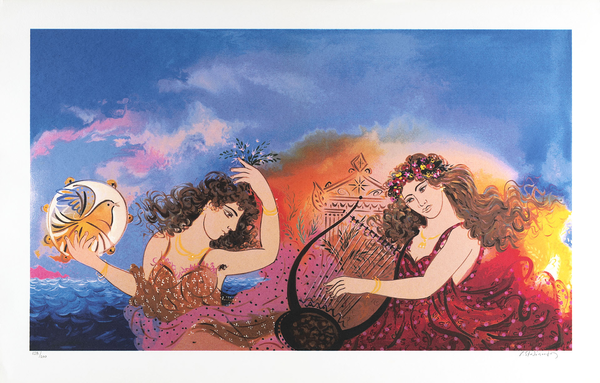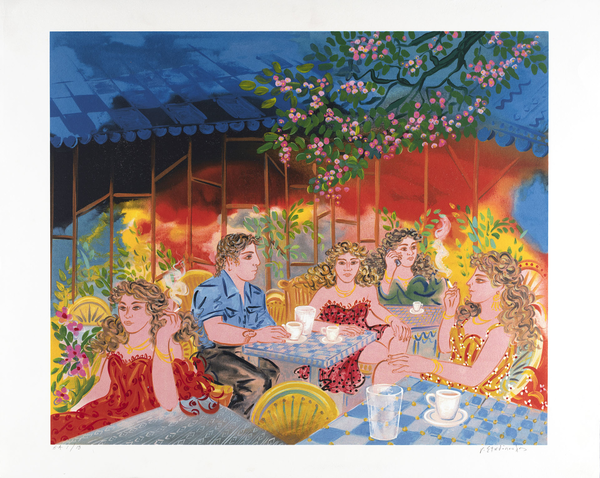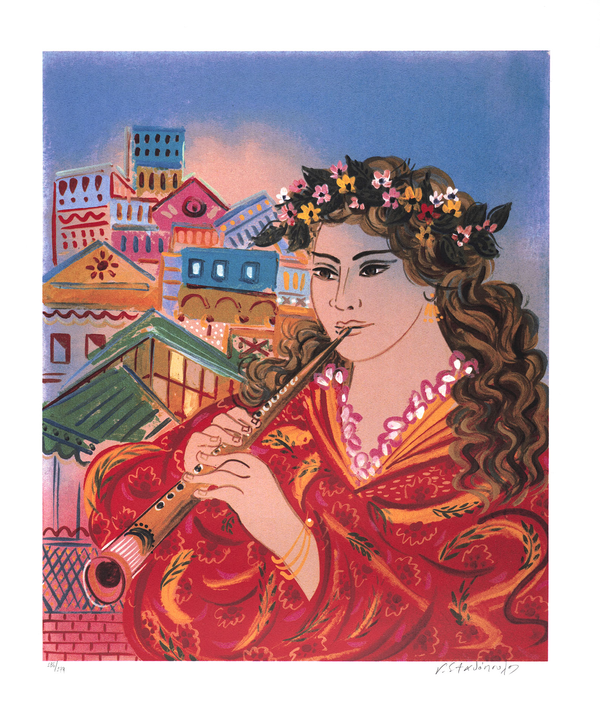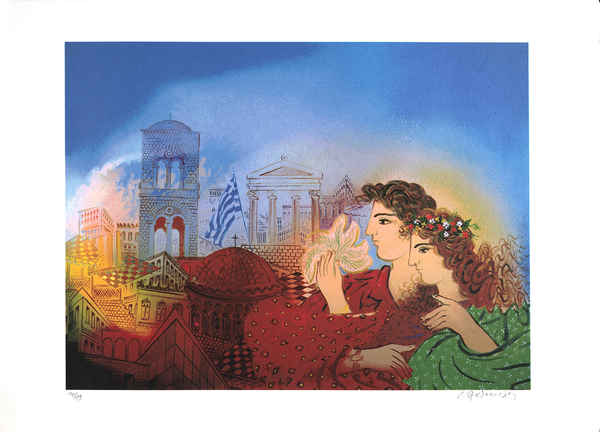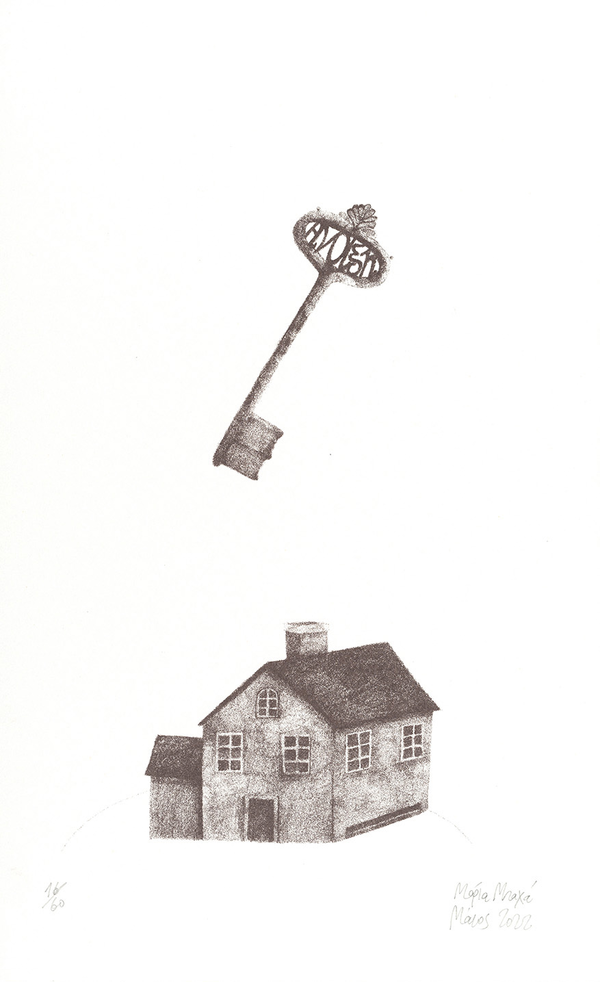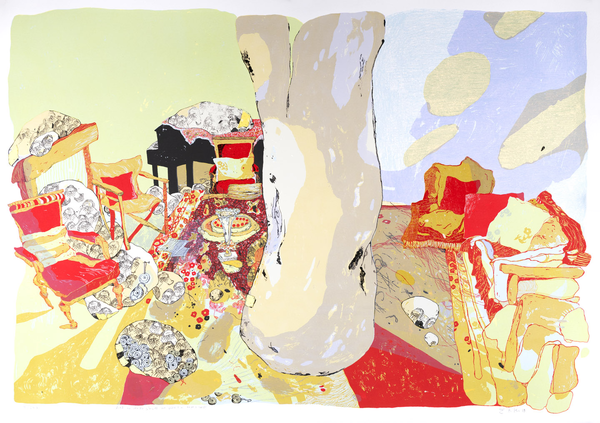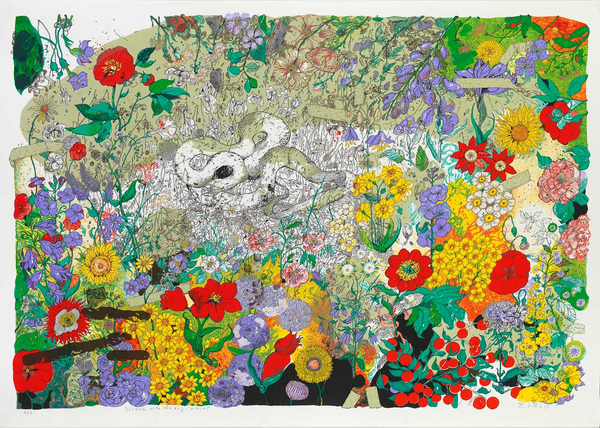Screen printing

Screen printing
Screen printing is a printing technique that transfers ink onto various surfaces through a frame with a fine mesh. Although its origins trace back to China during the Song Dynasty (960-1279 AD), it evolved and gained significant popularity in the West during the 20th century, primarily due to its ability to produce multiple copies with great precision.
The screen printing process begins with preparing the frame, which is stretched with mesh made from materials such as silk, nylon, or polyester. This mesh is mounted onto a wooden or metal frame and coated with a light-sensitive emulsion. Once the emulsion dries, a film stencil containing the design to be printed is placed over the mesh. The frame is then exposed to intense light, which hardens the areas of the mesh not covered by the design, while the covered areas remain soft and are washed away with water, creating openings in the mesh according to the design.
Once the mesh is ready, it is placed on the surface to be printed, which can be paper, fabric, plastic, glass, or metal. Using a tool called a squeegee, ink is pressed through the openings in the mesh onto the surface, leaving the design imprint. This process is repeated for each color in the design, with each color requiring a separate mesh and printing step.
Screen printing holds particular significance in fine arts as it allows artists to create reproducible works with precision and consistency. One of the most famous artists who utilized screen printing was Andy Warhol, who used the technique to create mass-produced images of pop culture, such as portraits of Marilyn Monroe and Campbell’s Soup cans. Warhol’s use of screen printing enabled him to reproduce images quickly and on a large scale, a key element of his art.
Roy Lichtenstein, another prominent pop art artist, also employed screen printing to create works that mimicked the aesthetic of comic books. With bold, clean lines and vivid colors, his screen prints allowed him to produce artworks with a striking graphic quality that resonated with mass-produced comic books and advertisements. This technique enabled him to create pieces that were both unique and repeatable, raising questions about authenticity and commercialization in art.
Today, screen printing remains popular in both fine arts and industrial production. Artists continue to experiment with the technique, using modern technologies to create new types of work. The use of digital tools for creating and processing film stencils has made the process more accurate and versatile, allowing artists to produce detailed and colorful works with greater ease.
Beyond art, screen printing is widely used in industry for printing fabrics, advertising banners, posters, and commercial packaging. The durability of prints and the ability to print on a variety of materials make screen printing ideal for commercial applications. The technique’s flexibility allows for the creation of durable and high-quality products, making it an integral part of modern industrial production.
In summary, screen printing is a multifaceted and adaptable printing technique that has evolved from its ancient origins into a modern form of art and industrial production.
The ease of reproducing multiple copies, the ability to use various colors and materials, and the durability of prints make it popular in fine arts and beyond.
Artists like Andy Warhol and Roy Lichtenstein have utilized screen printing to create iconic works that have significantly impacted 20th-century art, while the technique continues to evolve and adapt to contemporary needs and technologies. Screen printing remains a dynamic and continually evolving medium, offering endless possibilities for artistic expression and industrial use.
